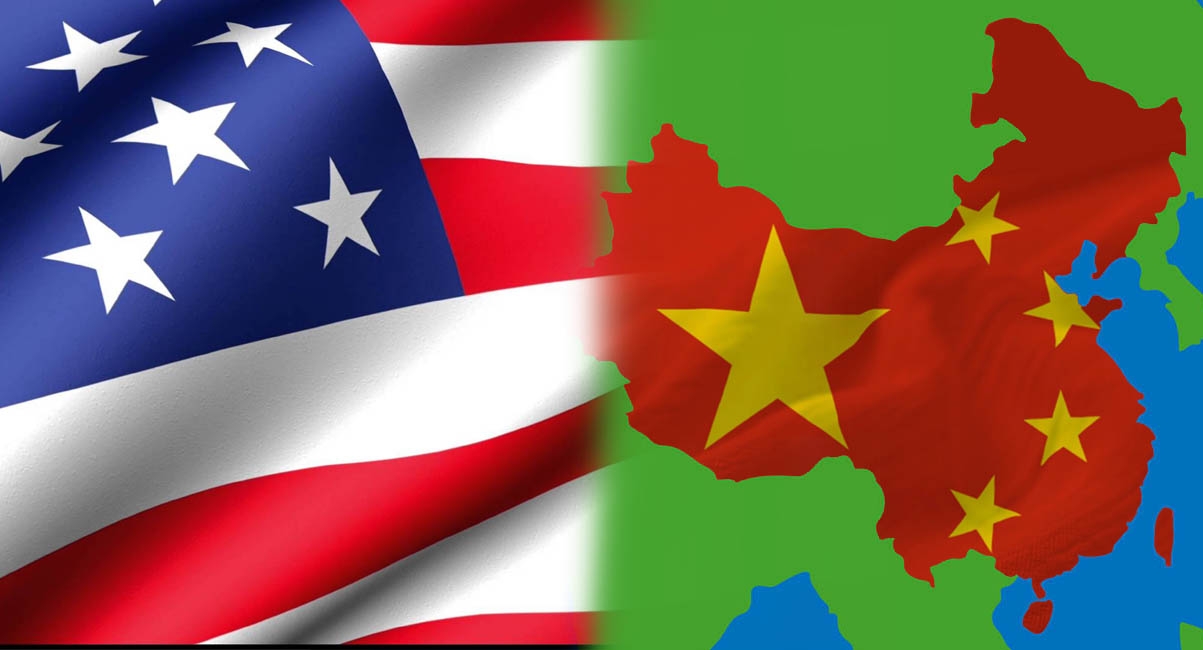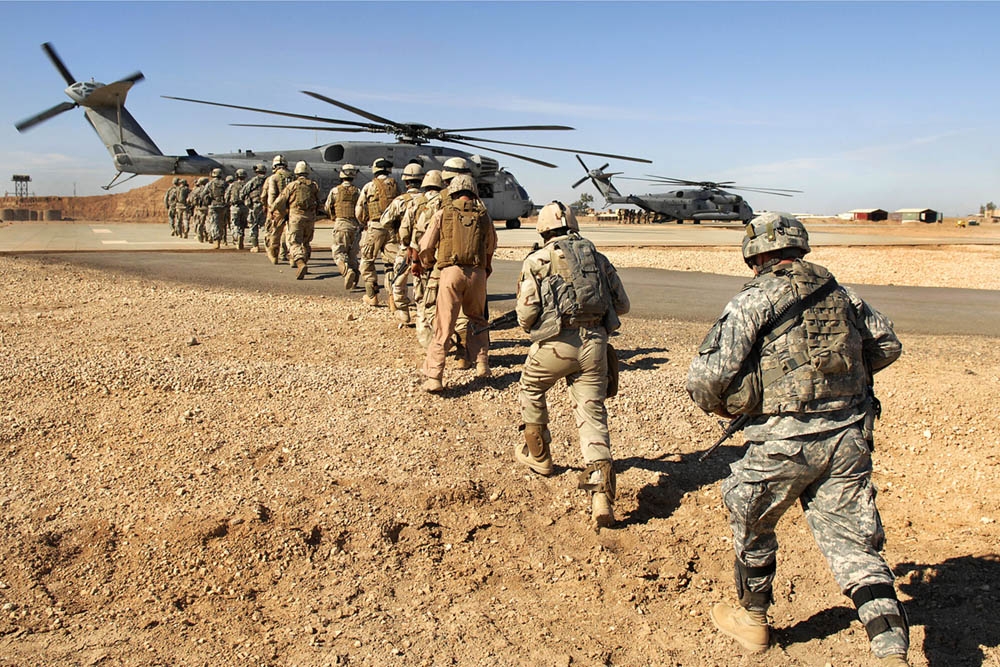
The One China principle and the One China policy . . . explained
The most serious threat to the international order may be western arrogance.
In March 2021, United Secretary Secretary of State Antony Blinken and National Security Adviser Jake Sullivan met with China’s most senior foreign policy official, Yang Jiechi, and Foreign Minister Wang Yi in Anchorage, Alaska.
It was the first meeting of officials between the two superpowers since Joe Biden was sworn in as the U.S. president two months earlier. The session did not go well as Blinken squandered the opportunity to lift Sino-American relations, which had gone off-track during the Trump administration, and instead chose to launch a patronizing and bellicose verbal attack on China and lecture his Chinese counterparts, saying he wanted to “discuss our deep concerns with actions by China, including in Xinjiang, Hong Kong, Taiwan, cyber attacks on the United States, economic coercion of our allies.” Blinken then chortled, “Each of these actions threatens the rules-based order that maintains global stability.”
The Chinese diplomats were having none of it. In response, Mr. Yang accused Washington of using its military might and financial supremacy to suppress other countries. “It abuses so-called notions of national security to obstruct normal trade exchanges and incite some countries to attack China.” He said that human rights in the U.S. were low, with Black Americans being “slaughtered.” Sullivan responded, saying Washington did not seek a conflict with China but added: “We will always stand up for our principles for our people, and for our friends.” Increasingly, questions are being asked about what exactly America is standing up for and why Canada and other U.S. allies are checking their brains at the door and following in lockstep when the United States appears to be taking a misguided approach to its relations with China.
The fundamental problem with contemporary American and Western diplomacy is the inability to look, assess or perceive things from the Chinese perspective. Instead, everything is viewed from the point of view of ‘the West.’ The de rigueur villainization of China as the new enemy of the West is not only misguided and wrong, it is dangerous.
In recent months, the Biden administration has used the Russian invasion of Ukraine as a pretext to ramp up a convenient fable that a Chinese invasion of Taiwan could be imminent. This highly irresponsible and false claim has only worsened U.S.-Sino relations. America’s allies, including Canada, have fallen in line and are now parroting this narrative.
Tensions grew to a boiling point with the recent and highly bizarre visit by U.S. Speaker of the perceive things from the Chinese perspective. China made it clear that they were against the visit which they maintain is contrary to the One China policy that is the core underpinning of the United States-China relationship. They believe it is an act of aggression. The Americans ignored the Chinese concerns. In response, China ramped up its military presence in the Taiwan strait to send a message that it will defend its strategic and geopolitical interests.
Imagine for a moment what the United States reaction would be if China sent the third most senior person in its government to visit Cuba, a mere ninety miles off the Florida coast, to express support for that regime. The Americans would be furious, and rightly so, given the deplorable record of the Cuban government in suppressing its people for the past seven decades. It would be interpreted as an offensive action against America and as interference in what they consider their area of hegemony. This is the same feeling China has with regard to Taiwan. The fact is there has been peace in the Taiwan Strait for seventy years, and sadly, the only people suggesting that will not continue is the United States.
Taiwan is a multi-island territory (36,197 square kilometers) in the western Pacific Ocean with a population of 23.78 million Mandarin-speaking Han Chinese people. Its de facto capital, Taipei, serves as the seat of government and is the island’s largest metropolitan area. Following Japan's defeat in World War II, Taiwan returned to Chinese control in 1945. In 1949 after the civil war in China, China’s ruling nationalist government was driven off the Chinese mainland by the armies of the Chinese Communist Party (CCP) and fled to Taiwan (along with more than a million other Chinese citizens). The fighting between the two sides ended in a stalemate, with the Chinese Communist Party (CCP), renamed the People’s Republic of China (PRC), controlling the mainland and the nationalists clinging to Taiwan—which they still called the Republic of China, or RoC. Although fighting had ceased in 1949, the conflict was never declared officially over, and no peace treaty has ever been signed.
As the pre-existing Chinese government, the nationalist government of Taiwan was considered legitimate because they were in place when China joined the United Nations in 1945, prior to the Chinese civil war. However, the CCP government ruling mainland China established that it, not the nationalist government in exile in Taiwan, was the legitimate government of China. The CCP’s strongest evidence was the fact that more than 98 per cent of Chinese citizens lived on the mainland. The United Nations agreed and switched its diplomatic recognition from the RoC in Taiwan to the People’s Republic of China on mainland China. As a result, the United Nations expelled Taiwan in 1971 and recognized the CCP/PRC as the official government of China.
In the October 1971 United Nations General Assembly (UNGA) Resolution 2758, which was adopted with an overwhelming majority, it was decided to restore the lawful seat of the People’s Republic of China in the UN and determined the issue of China’s representation in the UN in political, legal, and procedural terms. The official legal opinions of the Office of Legal Affairs of the UN Secretariat pointed out explicitly that “the United Nations considers ‘Taiwan’ as a province of China with no separate status,” the “‘authorities’ in ‘Taipei’ are not considered to . . . enjoy any form of governmental status,” and “Reference to ‘Taiwan’. . . should read ‘Taiwan, Province of China.’” Based on the one-China principle, China established diplomatic relations with 181 countries, including the U.S., in 1979.
Since then, the One China policy has been the underlying bedrock of all Chinese-U.S. relations. It is also an integral part of Chinese policymaking and diplomacy. China’s position has remained constant — that there is only one Chinese government and that China has sovereignty over Taiwan.
The One China policy refers to the United States' policy of strategic ambiguity regarding Taiwan. In 1972 the United States signed a joint communiqué with the People’s Republic of China (PRC) that “acknowledges that all Chinese on either side of the Taiwan Strait maintain there is but one China and that Taiwan is a part of China” and “does not challenge that position.”
The document also reaffirmed the U.S. interest in a peaceful settlement of the Taiwan question. The United States has formal relations with the PRC, recognizes the PRC as the sole legal government of China, and simultaneously maintains its unofficial relations with Taiwan. In 1979, the United States went further, making a clear commitment in the China-U.S. Joint Communique on the Establishment of Diplomatic Relations: “The United States of America recognizes the Government of the People’s Republic of China as the sole legal Government of China. Within this context, the people of the United States will maintain cultural, commercial, and other unofficial relations with the people of Taiwan.”
China’s Ministry of Foreign Affairs maintains that because of this agreement, “Congress, as a part of the U.S. Government, is inherently obliged to strictly observe the one-China policy of the U.S government and refrain from having any official exchanges with China’s Taiwan region.” In short, the Chinese claim the United States has violated the agreement.
The One China policy is distinct from the One China principle, whereby China insists Taiwan is an inalienable part of one China to be reunified one day. The Chinese believe this to be inevitable. The One China principle is the position held by the People's Republic of China (PRC) that there is only one sovereign state under the name China, with the PRC serving as the sole legitimate government of that China, and that Taiwan is a part of China. It rejects the idea that two states are holding the name "China," the People's Republic of China (PRC) and the Republic of China (ROC) or Taiwan, or that China and Taiwan form two separate countries.
The One-China principle is an established norm of international relations and a universal consensus of the international community.
The Biden administration’s approach to China on Taiwan and the recent Pelosi visit appear to be a breach of the longstanding agreement between the two countries. From China’s perspective, it is an act of aggression.
A statement released by China’s Ministry of Foreign Affairs on the Pelosi visit to Taiwan called the visit “a serious violation of the One-China principle and the provisions of the three China-U.S. joining communiques.” It said it “gravely undermines peace and stability across the Taiwan Strait, and it sends a seriously wrong signal to the separatist forces for ‘Taiwan Independence.’ China firmly opposes and sternly condemns this and has made serious demarche and strong protest to the United States.”
The Chinese Ministry of Foreign Affairs says the American moves related to Taiwan are meant to promote the “China threat” narrative, interfere in China’s internal affairs, and smear China’s domestic and foreign policy, all in an attempt at full-blown containment and suppression of China.
Beijing’s display of military strength via exercises around Taiwan before, during, and after the Pelosi visit were a signal to show that it is committed to the One China policy and will defend it, with force, if necessary, their sovereign and territorial integrity.
The Chinese maintain they are not the aggressors. This is not an unreasonable assertion. Consider this: The U.S. maintains 750 international military bases and spends more than 3.8 per cent of its GDP on defensive and offensive technologies. That is more than the total amount the next nine countries spent on the military and armaments combined. China maintains three international military bases and spends less than 1.8 per cent of its GDP on its military.
The Chinese position is that the U.S. is constantly working to preserve an international order designed to serve the US’s own interests and perpetuate its hegemony, and they claim the US itself is the largest source of disruption to the actual world order. In a brief on its website, China’s Ministry of Foreign Affairs says, ‘China has been and always will be a defender of the international order. China is a founding member of the United Nations (UN) and the first country to put its signature on the UN Charter. China is committed to upholding the UN-centered international system, the international order underpinned by international law, and the basic norms governing international relations built on the purposes and principles of the UN Charter. The Five Principles of Peaceful Coexistence jointly championed by China, India, and Myanmar have been widely recognized by the international community and have become the basic norms guiding state-to-state relations.”
In response to U.S. and Western claims against China, the Chinese government is hitting back. It says that at various times the U.S. has blatantly violated the purposes and principles of the UN Charter and the norms governing international relations. They note that the U.S. has launched wars in numerous parts of the world, stoking divisions and conflicts and bringing huge turmoil and disaster to the world. They also note that in the 240-plus-year history of the U.S., there were only 16 years in which the U.S. was not at war. Since the end of World War II, the United States has either launched or participated in many wars overseas, including the Korean War, the Vietnam War, the Afghan War, and the Iraq War. Those wars caused severe civilian casualties and property losses, leading to colossal humanitarian disasters. Since 2001, U.S. wars and military operations in the name of counterterrorism have killed more than 900,000 people, about 335,000 of whom were civilians, injured millions, and displaced tens of millions.
China also postulates that the U.S. habitually puts its domestic law above international law and selectively applies international rules as it sees fit. They claim that since the 1980s, the U.S. had once withdrawn from 17 international organizations and treaties, including the United Nations Human Rights Council (UNHRC), the World Health Organization (WHO), the United Nations Educational, Scientific and Cultural Organization (UNESCO), the Paris Agreement, the Joint Comprehensive Plan of Action (JCPOA), the Arms Trade Treaty (ATT), the Intermediate-Range Nuclear Forces (INF) Treaty and the Treaty on Open Skies. The Chinese say that although the Biden administration declared that “America is back” and the U.S. has rejoined some international organizations and agreements, the administration has, in essence, not abandoned the “America First” policy and is advancing “selective multilateralism.” They note the current administration has stayed out of institutions and agreements considered harmful to U.S. interests, such as the Treaty on Open Skies, and has pointed out that European media have described it as “America First 2.0.”
China counters American criticism of their foreign policy record by saying they uphold true multilateralism and global strategic stability and cite that they are the largest contributor of peacekeepers among the permanent members of the UN Security Council and the second largest contributor among all countries to the UN peacekeeping budget. China points out that it has taken an active part in international arms control, disarmament, and non-proliferation processes and has signed or acceded to more than 20 multilateral arms control, disarmament, and non-proliferation treaties, including the Treaty on the Non-Proliferation of nuclear weapons (NPT) and the Arms Trade Treaty (ATT). China has also stated in many international forums that it is against the arms race.
Economically, China argues that it has adopted a responsible macro policy, remained a “stabilizer” for the world economy, and made important contributions to the global economy. The cite China's role in actively providing international public goods to various countries and that they have signed BRI cooperation agreements with 149 countries and 32 international organizations.
On the innovation and environment front, China counter American and Western criticisms by noting that they have built 25,000 miles of high-speed electrified rail since 2007. The U.S. has built none. China has 500,000 electric buses on its roads. The U.S. might be approaching 1,000. China has over 50 GW of pumped hydro under construction right now. The U.S. has none. China built as much offshore wind in 2021, 17 GW, as the rest of the world combined in 2021 alone. The U.S. built no offshore wind in 2021 and has two tiny offshore wind farms totaling 42 MW. China built as much renewable energy as the rest of the world combined in 2021. The U.S. has six times the GDP per capita as China, and China has four times the population of America. This would suggest that China should be buying, if anything, fewer new electric vehicles (EVs) if price point were actually a concern. Instead, China is buying six times as many EVs as the U.S. annually.
The real issue may not be China. It is more likely has to do with America’s perception of itself and its increasing inability to see things through the eyes of others. That is not a strength. Canada should take note, instead of taking the notes from the United States on the China file.









